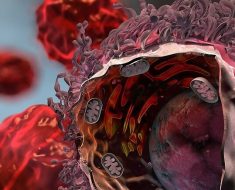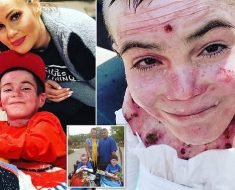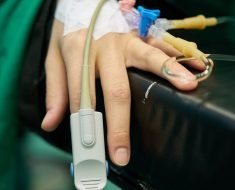The World Health Organization (WHO) recommends that infants are breastfed for at least the first six months of life and that breastfeeding is continued, along with the gradual introduction of complementary food, for two years or more.

Study: Milk Antibody Response after 3rd Dose of COVID-19 mRNA Vaccine and SARS-CoV-2 Breakthrough Infection and Implications for Infant Protection. Image Credit: Tomsickova Tatyana / Shutterstock.com
An overview of breast milk
Breastfeeding is associated with both short- and long-term protective effects from several diseases. For example, the duration and exclusivity of breastfeeding are associated with a reduced risk of respiratory tract infections in infants.
Human breast milk consists of several factors, such as enzymes, cytokines, antibodies, extracellular vesicles, and immune cells that provide anti-viral protection to the infant. Furthermore, the breast itself also provides passive immunity in the form of immunoglobulin G (IgG), IgM, and IgA to the infant, irrespective of not having a direct mucosal surface.
The secretory form of IgA (sIgA) is the predominant antibody found in human breast milk, whereas levels of IgG, which is present in its monomeric form, are lower as compared to both IgA and IgM.
Breastfeeding protects against COVID-19
Lab Diagnostics & Automation eBook

Several studies have reported the presence of antibodies against the severe acute respiratory syndrome coronavirus 2 (SARS-CoV-2) in human milk after lactating women have received two doses of messenger ribonucleic acid (mRNA)-based coronavirus disease 2019 (COVID-19) vaccines. More specifically, IgG and IgA against the SARS-CoV-2 spike protein have been identified in human milk following vaccination and infection.
Importantly, antibody dynamics are different based on either infection or vaccination. IgG levels, for example, appear to increase after receiving the second vaccine dose, while sIgA levels increase following SARS-CoV-2 infection.
Further information is needed on the duration and potency of antibody responses in breast milk beyond the second vaccination and the effect of hybrid immunity obtained by breakthrough infections during the Omicron era.
Young infants are at a higher risk of severe COVID-19 and hospitalization than older children. To date, COVID-19 vaccines have not been approved for infants below six months of age in the United States; however, vaccination during pregnancy can provide some protection to infants.
Nevertheless, data on the symptomology and immune protection produced following infection and vaccination are limited for breastfeeding infants and lactating individuals. More information is therefore needed to determine the protection against COVID-19 during the vulnerable months of infancy, the level of antibody transfer to infants and the persistence of anti-SARS-CoV-2 antibodies in milk post-vaccination.
About the study
A new The Lancet preprint* study assesses anti-SARS-CoV-2 antibody levels in breast milk obtained from lactating individuals following two or three COVID-19 vaccine doses and following breakthrough infections in vaccinated mothers. To this end, the researchers analyzed the symptomology of both the infants and mothers following vaccination or infection and the duration and presence of passively transferred antibodies in the saliva of breastfed infants.
The current study included lactating or pregnant individuals who received the COVID-19 vaccine from December 2020 to April 2022. All participants answered questions on infant and maternal symptomology following each vaccine dose. In addition, study participants with a history of breakthrough infections also responded to questions on infant and maternal symptoms post-infection.
The collection of milk samples took place at six different time points, which included pre-vaccine, post-dose two, pre-dose three, post-dose three, five months post-dose three, and post-infection. In addition, maternal blood samples were collected at the same time points as milk collection.
Evaluation of the duration of antibody persistence in the infants' saliva following breastfeeding was carried out by collecting saliva samples immediately after breastfeeding, 30 minutes after, 60 minutes after, and before the next breastfeeding session.
Paired maternal milk and saliva samples were also collected on the day of infant collection. Finally, the anti-spike enzyme-linked immunosorbent assay (ELISA) assay was used to measure IgA and/or IgG in the milk, blood, and saliva samples.
Study findings
A total of 33 lactating individuals who had received two COVID-19 vaccine doses provided milk samples. Of these individuals, 26 received a third vaccine dose, 19 of whom provided samples for the assessment of antibodies.
Of these 19 participants, 10 reported a breakthrough infection during the Omicron wave. Moreover, another 14 participants provided saliva and/or milk samples and infant saliva samples following their second or third vaccine dose.
No participant reported severe symptoms following receipt of the third vaccine dose. Common maternal symptoms included pain at the site of injection, tiredness, or fatigue.
Fewer symptoms were reported following the third dose than those following receipt of the second vaccine dose. Moreover, general symptoms were mostly reported post-infection as compared to following the third dose.
All infected infants exhibited at least one COVID-19 symptom, with one requiring evaluation at the emergency department. Additionally, seven out of eight infants required consultation with their physician regarding their COVID-19 diagnosis.
The average age of the infants was eight months, all of whom were not exclusively breastfed. Milk anti-spike antibodies were observed six to eight months after receipt of the second vaccine dose.
Notably, anti-spike IgG levels within breast milk decreased significantly over time, while anti-spike IgA levels were maintained at detectable levels following receipt of the second vaccine dose. Following the third vaccine dose, IgG levels were higher than those reported after the second vaccine dose; however, the rise in IgA was not significant.
IgG and IgA levels decreased five months after receipt of a third vaccine dose. Individuals with a history of breakthrough infections exhibited higher IgA levels in breast milk as compared to after the second and third vaccine doses.
Additionally, anti-spike IgA levels were higher in the plasma of lactating individuals post-infection as compared to after the third vaccine dose. The correlation between blood IgA levels and milk was stronger after infection than after the third vaccine dose.
A positive correlation was observed between anti-spike IgA and anti-spike IgG antibodies in breast milk and maternal saliva. Furthermore, anti-spike IgA levels were significantly higher over time in the infant’s saliva after breastfeeding than in IgG.
Conclusions
The current study reports that antibody levels within human milk increase after receiving the second COVID-19 vaccine dose and are maintained for up to eight months in some individuals. IgG levels also rise after a third vaccine dose, while the increase in IgA was more significant following breakthrough infection. In addition, IgA was found to be more stable in the mouth of the infant after breastfeeding, which can be essential for infant protection.
Nevertheless, further large-scale studies are required to accurately understand the role of milk antibodies in the protection of infants from COVID-19. The development of future vaccines must also focus on inducing milk IgA antibodies to increase the protection of infants during lactation.
*Important notice
Preprints with The Lancet / SSRN First Look publishes preliminary scientific reports that are not peer-reviewed and, therefore, should not be regarded as conclusive, guide clinical practice/health-related behavior, or treated as established information.
- Golan, Y., Ilala, M., Gay, C., et al. (2022). Milk Antibody Response after 3rd Dose of COVID-19 mRNA Vaccine and SARS-CoV-2 Breakthrough Infection and Implications for Infant Protection. The Lancet. doi:10.2139/ssrn.427350.
Posted in: Child Health News | Medical Research News | Women's Health News | Disease/Infection News
Tags: Antibodies, Antibody, Assay, Blood, Breast Milk, Breastfeeding, Children, Consultation, Coronavirus, Coronavirus Disease COVID-19, Cytokines, ELISA, Enzyme, Fatigue, Food, immunity, Immunoglobulin, Omicron, Pain, Pregnancy, Protein, Respiratory, Respiratory Tract Infections, Ribonucleic Acid, SARS, SARS-CoV-2, Severe Acute Respiratory, Severe Acute Respiratory Syndrome, Spike Protein, Syndrome, Tiredness, Vaccine

Written by
Suchandrima Bhowmik
Suchandrima has a Bachelor of Science (B.Sc.) degree in Microbiology and a Master of Science (M.Sc.) degree in Microbiology from the University of Calcutta, India. The study of health and diseases was always very important to her. In addition to Microbiology, she also gained extensive knowledge in Biochemistry, Immunology, Medical Microbiology, Metabolism, and Biotechnology as part of her master's degree.
Source: Read Full Article





